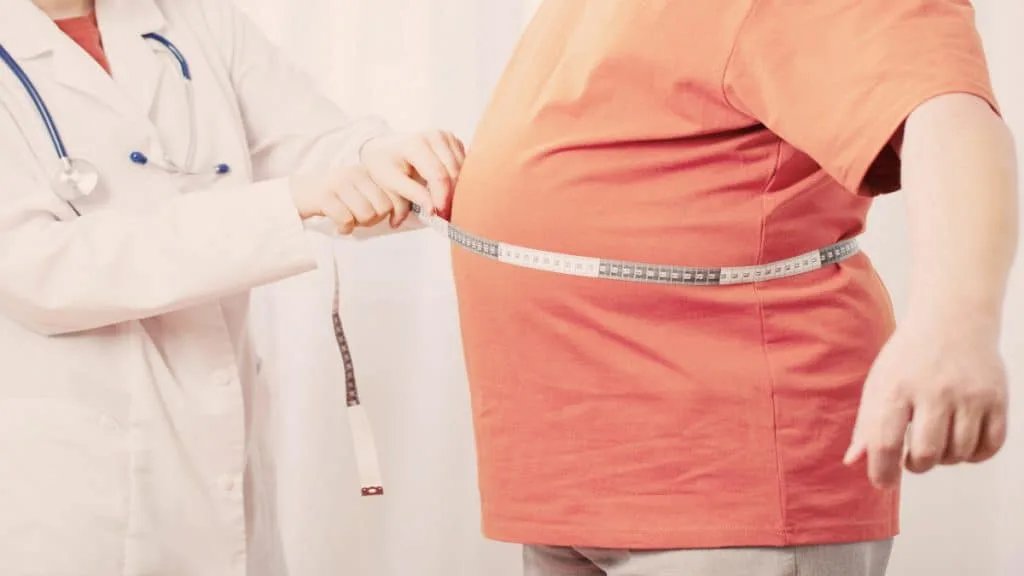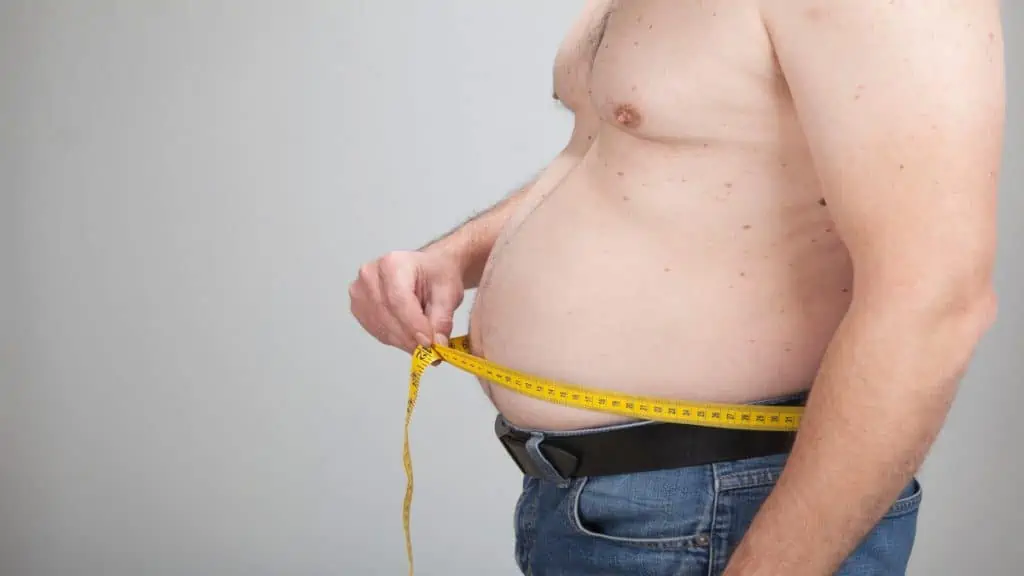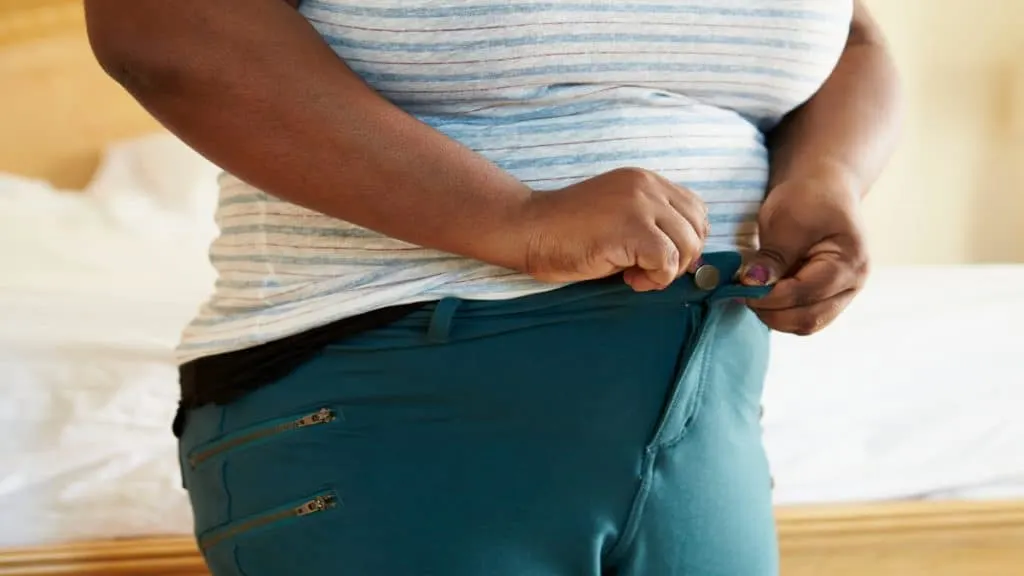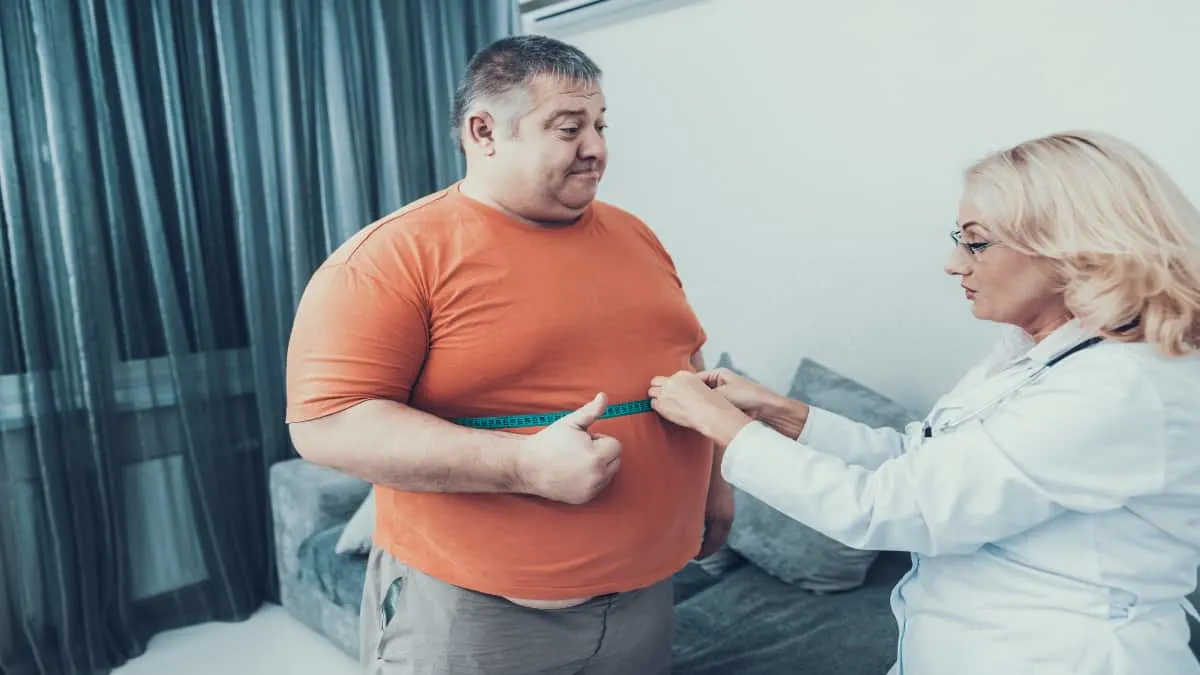Having a 54 inch waist is a sure sign of abdominal obesity, one that can result in all manner of health problems down the road if you don’t drop some fat.
You can see our article “what is considered a small waist?” if you want detailed information on average measurements, but essentially, a 54 in waist is far bigger than normal for both men and women.
You can also check out our similar circumference measurement guides for different perspectives on slimming your stomach.
- 50 inch waist
- 51 inch waist
- 52 inch waist
- 53 inch waist
- 55 inch waist
- 56 inch waist
- 57 inch waist
- 58 inch waist
- 59 inch waist
Should you be worried about having a 54 inch waist?

While you shouldn’t be overly concerned about what people think of your body (unless they’re a relative, friend, or doctor who’s really concerned about your health), it’s just not possible to enjoy your best health while having a 54 inch waist.
So, in terms of your physical health, having a 54″ waist should be a wake-up call that you need to lose weight, which you can do by increasing your activity level and restricting your calorie intake.
Indeed, research shows that in men, for example, both general obesity and abdominal obesity are associated with an increased risk of type 2 diabetes. [1]
In women, data shows that having an excessively big stomach, especially in relation to the hips, can increase your risk of mortality. [2]
How big is a 54 inch waistline?

Based on anthropometric data from the CDC, a 54 inch waistline is much bigger than average for both males and females. For men, a 54 inch belly is around 14 inches bigger than average, and for women, a 54″ waist is roughly 16 inches larger than normal.
The worrying thing is that the average measurements are already too big for people to live in optimal health. This is because most medical experts recommend that men and women keep their waists below 37 inches and 35 inches, respectively, if they want to maintain a low risk of chronic diseases (some recommendations are as low as 35 inches for men and 31.5 inches for women).
Of course, even with a 54 inch stomach, there are still many people who’re worse off than you in terms of body composition. But that fact doesn’t mean that you should wait around for even more body fat to accumulate around your waist. More on that in a sec.
What can you do to slim your 54 in waist?

When people realize that they’re putting their health at risk by having abdominal obesity, they often panic (and perhaps rightly so) and start crash dieting and/or performing unsustainable amounts of exercise.
Note the word unsustainable.
If you want to lose weight and keep it off, you need to follow a sustainable exercise routine that doesn’t make you feel resentful. So, while high-intensity training is undeniably effective for torching fat, it might not be appropriate for your current level of fitness.
Walking is much less strenuous and can burn hundreds of calories if you go at a good pace. Plus, if you can walk in a nice area, you might also notice an improvement in your mood.
But working out won’t just change your body composition. Research shows that exercise becomes especially important as we age because being active can help to keep chronic diseases away. [3]
On the diet side of things, do your best to avoid junk food as much as possible. Ideally, you should cut it out of your diet completely because it’s typically devoid of important vitamins and minerals.
Instead, eat a variety of healthy whole foods that will help to nourish your body.
The verdict: How long do results take?

It depends on the kind of results you’re looking for. You won’t get rid of your 54 inch waist overnight, but you can experience decent weight loss within the first couple of weeks. Within a month or two, you’ll be able to witness your stomach shrinking before your eyes if your training and diet have been on point.
Just know that losing weight and slimming your 54 in stomach requires that you’re in a calorie deficit. You can create the necessary deficit by increasing your activity level and reducing your calorie intake.
In this regard, it’s best to do both so that you’re not completely starving or completely exhausted for high-intensity workouts.
References
- Wang, Y., Rimm, E. B., Stampfer, M. J., Willett, W. C., & Hu, F. B. (2005). Comparison of abdominal adiposity and overall obesity in predicting risk of type 2 diabetes among men. The American Journal of Clinical Nutrition, 81(3), 555–563. https://doi.org/10.1093/ajcn/81.3.555
- Folsom, A. R. (1993). Body Fat Distribution and 5-Year Risk of Death in Older Women. JAMA: The Journal of the American Medical Association, 269(4), 483. https://doi.org/10.1001/jama.1993.03500040049035
- Andersen, T. (2021, December 4). Exercising later in life will help stave off chronic disease, Harvard study says. BostonGlobe.Com. https://www.bostonglobe.com/2021/12/01/metro/exercising-later-life-will-help-stave-off-chronic-disease-harvard-study-says/

